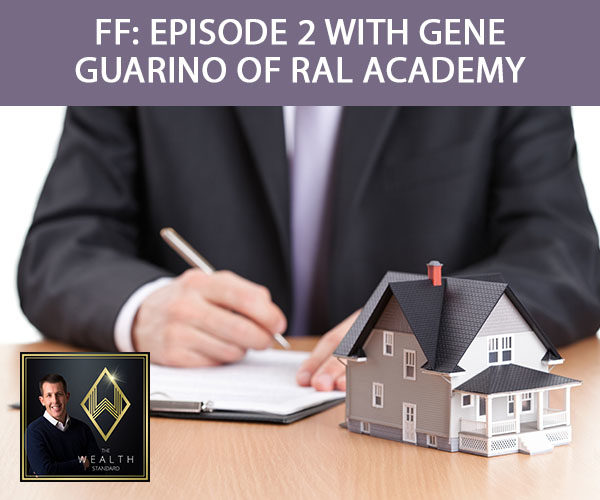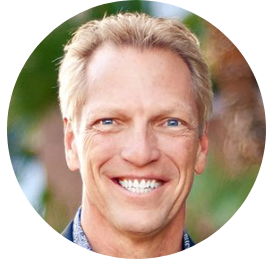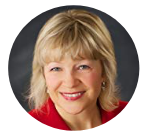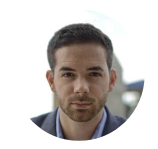Using Investments to Navigate the Silver Tsunami with Gene Guarino
Podcast: Play in new window | Download
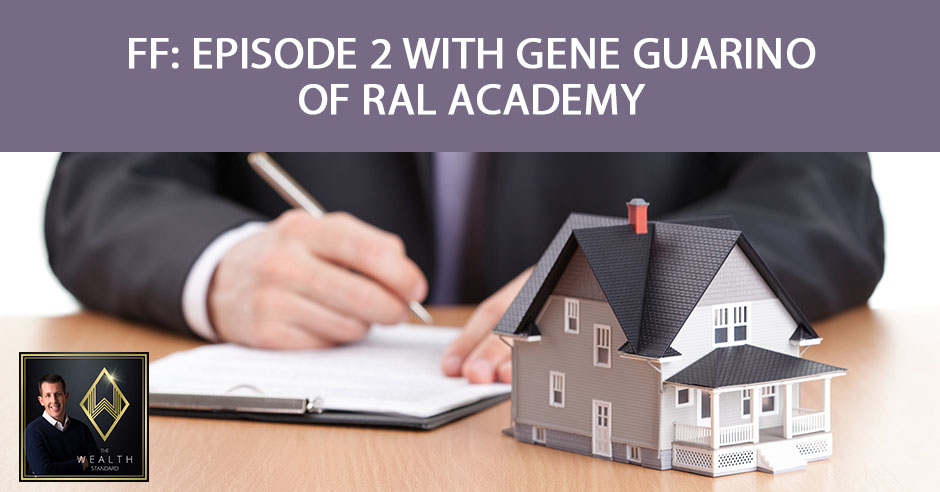
There is a huge opportunity that exists with providing services to the aging population because it is a massive challenge that most people don’t even realize. They’re not realizing that this is the silver tsunami, and it’s a wave that isn’t going to die. Gene Guarino, President of Residential Assisted Living Academy, talks about his business and some of the opportunity that exists in the residential assisted living space, specifically with residential properties. Join us in this conversation as we explore the huge opportunity not just in housing but in all the different ways in which we could be of value in service to the aging population.
—
Watch the episode here:
Listen to the podcast here:
Using Investments to Navigate the Silver Tsunami with Gene Guarino
Financial Friday
We have a familiar face and name, his name is Gene Guarino. He is the President of Residential Assisted Living Academy. We are going to be talking about his business and some of the opportunity that exists in the residential assisted living space specifically with residential properties, not assisted living like big commercial buildings and so forth. I’m really excited because this is a topic of conversation that I see as a huge opportunity not just in housing but in all the different ways in which we could be of value in service to the aging population. You’re going to love this guy. He has an amazing voice. I’m not going to say, Gene, you have a face for radio because you have an amazing face too. You have an amazing voice and an amazing face. First off, welcome. Thanks for joining me, Gene. Welcome to the show.
Thank you. It’s good to be back
We have a very similar philosophy in regards to the huge opportunity that exists with providing services to the aging population because it is a massive challenge that most people don’t even realize. It’s like staring me in the face because I pay attention to statistics, government spending, deficits and Social Security deficiencies. I pay attention to all that financial stuff that most people don’t know. They’re not realizing that this is the silver tsunami. It’s a wave that isn’t going to die. It’s there and it’s going to be in our face before we know it. Maybe we’ll speak to that generally first and then we’ll get into the housing situation.
When we talk about older people, all those demographic facts and figures, it’s simply undeniable. When we say the silver tsunami of seniors is coming, it’s hitting the shore right now. Somebody like myself who’s a Baby Boomer, but I’m not on the front edge. There are 72, 73 years old, they’re the front edge of the Baby Boomers right now. They’re hopefully enjoying their retirement playing pickleball and golf, tennis, but some of them need help. That assisted living means they’re living someplace where they’re getting help or needing that help. The big crisis is there are not enough caregivers. There are not enough people to take care of them. The kids can’t quit their job. They’re in the prime of their earning career. They’re taking care of their kids and their grandkids. They’ve got their parents above them. It’s a real crisis for a lot of people that financially can’t afford to hire somebody to come in to take care of mom or dad. They need to be brought to someplace and that’s not inexpensive either. It’s staring in the face. All of us that are in an age where our parents are 80 and 90 years old, my parents are both passed away. At 80 or 90, by that point, some of them need some serious help and assistance. When you start to price that out, it’s very expensive. When you look at that, you say, “Which side of that equation do I want to be on, the giving or the receiving side?” There’s a huge opportunity to do good and do well, which is where we were talking about.
The silver tsunami of seniors is coming; it's hitting the shore right now. Click To TweetI can speak to this with direct experience because my parents are on the frontend of the Baby Boomer generation. It’s been interesting because my dad ingrained in us to work hard and go all out with everything that you do. He was that way. He’s had knee surgery. He’s had some eyes stuff going on. He couldn’t hear forever. It’s like you start to see your parents. Even though they want to be active and they want to be playing pickleball or doing those things, they’re physically not able. You have different stages of retirement where you have some go-go years where it’s like go for five, ten years in retirement. After that, your body is affected and you need help. There are certain people that have prepared for it where they have a plan. They understand what that future need is going to be. There’s a lot of people that aren’t looking past two years, past three years and it’s going to catch people off guard. Kids are going to have to quit their jobs or figure out a way to keep their parents at home. There are simply not enough retirement assets to be able to sustain ten, fifteen years in some facility or housing that gives them assistance.
Usually, for most people reading, I want to make sure you understand when we say assisted living, most people aren’t in there for ten or fifteen years. What is that three to five years that drains hundreds of thousands of dollars, which in most people’s accounts, that’s their entire estate? That’s the future inheritance that a lot of people who are reading maybe expecting to get or hope they would receive. We have people move in and they’re with us for three years. They’re spending $6,000 a month and six times 36 is a lot of money when you think about their house, their income and so on. Before you know it, they spent a ton of money. It’s usually an event. I wanted to say that too, that if something happens. It comes upon us, but the reality is you’re going be living fine and then somebody gets a little bit older, they fall out of bed. The next thing you know they do need that constant care or that help. Somebody needs to make decisions and all of a sudden that money is starting to flow out of your household or out of that estate pretty quickly. It does add up fast. If you make some good decisions right now, you can be receiving that income now and having a great place for mom and dad and/or yourself to live in.
Let’s talk specifically about assisted living, that window, because I’m curious about that window. Also what are typically the options people have and how does your niche fit into that? Gene, this is something that I want to understand because I pay attention a lot to technology and improvements to lifestyle. I realized that we’re on the brink of a lot of medical improvements that could totally prolong life. What most people thought was the life expectancy of 78 or 80 can extend into the 90s potentially. Let’s talk specifically about the period of time where you slot in. The period of time where people can’t live autonomously. They need some assistance. When that escalates to actual in-home care, like a lot of care with their long-term care needs.
Let me break it down for everybody who’s reading to make sure you understand there are different levels. It starts with independent living. Independent living is that somebody who is 55 or older living on their own or with their spouse taking care of themselves. Sometimes you see communities or age-restricted adults only 55 and above, that’s not assisted living. On the other side, you have nursing homes. Nursing homes is a medical facility, doctors, nurses, gurneys, medication and so on. That’s a nursing home. In between, sometimes people need help, assistance with their ADL or activities of daily living. That could be everything you did after you hit the snooze alarm. It could be bathing, dressing, eating, medication management and so on.

Residential Assisted Living: The big crisis is there are not enough caregivers and people to take care of the olds.
Nobody moves into assisted living unless they need help. It’s not a vacation. It’s not a country club that’s independent living. They move in. They need help. The kids who are 50 or 60, the parents are typically 80 and 90. The kids don’t have the full-time ability to take care of mom and dad. They move them into this home. The average person in assisted living is in their 80s, might be 82, 84. I’ve had residents as young as 49 and as old as 104. Both of those are unusual, but it’s this bond. They’re going to be in that home for the rest of their life. That’s where they typically pass away inside that home. If you’re a little squeamish about that, “We’re all going to die.” Have a conversation with a good friend if you don’t know about that, but the point is we’re all going to pass away.
Most of the people who move into assisted living do not go on to a nursing home. It’s not like TV where they are lying in a hospital bed and flatlining. People pass away in their sleep. It’s not all of a sudden when they’re actively passing. Not to be morbid, I just want to be clear that they’re going to live in that home for a year or two or three. We’ve had some people in these homes for ten years, but it’s typically two to three years. That’s how long they’re in the home. The cost of that, by the way, to make sure you know that is $4,000 a month is the current average in the US. That’s an average home including Medicare, Medicaid. It’s not where I’m going to go. It’s not where you’re going to go. The private pay is $5,000, $6,000, $7,000, $8,000, $10,000 a month. That’s what people are literally paying to live in these homes. That’s a great thing on the business side.
Maybe talk about the difference between traditional assisted living facilities versus residential assisted living facilities for those audience that are new.
I differentiate it by saying a big box or residential. The big box is what you probably have seen 100 beds, 200 beds, 300 beds. It’s a big facility. It might look like a hospital. It could have been a converted institution or hospital for that matter. There are brand new ones now that look like country clubs. They’re $20 million, $30 million, $40 million, $50, million complexes. You would be proud to live there yourself. It’s a beautiful facility. It’s a big box. There are 100, 200, 300 people. That means communal eating. There are bigger activities and lots of people. Thinking about mom that she’s lived in a home for all of her life. She doesn’t want to move to a hotel. She doesn’t want to live in an apartment complex. She wants to stay at home in a home.
There's a huge opportunity to do good and do well. Click To TweetThe residential-assisted living is exactly what it says, “Residential, it’s a home.” It might have eight, ten, twelve residents in that single-family home in a residential neighborhood. It’s not gated or fenced. There’s probably not a sign in front. It could be the house next door and you wouldn’t even know it. It’s a residential assisted living. One of the big advantages, Patrick, is the idea of caregivers. It’s not the house and how nice the lighting fixtures are, it’s the caregivers. In a big facility, you might have 150 people with ten caregivers on staff during the day, and two or three caregivers at night. In a home where you have ten residents, you’ll probably have two caregivers on during the day and one at night. It’s 24-hour care but the ratios of caregivers to residents is much better in a residential setting.
Human beings always want connection. We thrive off of our relationships, our intimate ones, our friendships. Later in life, this is where I think those come into view as for how vital they are for our livelihood, but just our experience in life. That’s where having good caregivers makes a huge difference to longevity, happiness levels, health and so forth. That’s a vital piece of this is when you know the care is taking place. It’s having the right people giving that care. At the same time, it’s the right volume of attention.
I grew up in a family with seven kids, so there are lots of kids around. When the kids start to move out and it’s mom and dad at home, and when one of them passes away, and it’s mom in a big huge house with four empty bedrooms, it gets awfully lonely. Being in a community of peers their own age where they can talk about things that they did way back when and they can dance together, sing together, enjoy life together, it is huge.
Let’s segue and talk about the opportunity. You’ve been doing this for five or six years now, which is teaching people how to find the right home, the type of home that has enough bedrooms. That it would make financial sense to convert it into a residential assisted living facility. Talk about that, but then also use this time to talk about the new opportunity that you have coming.

Residential Assisted Living: If you make some good decisions right now, you can be receiving that income now and having a great place for mom and dad and/or yourself to live in.
I own and operate these homes in Arizona, but I train people all over the country how to do it in their own state. I own and operate homes. I train people how to operate the homes and the real estate as an investment. Where to do it, how to do it, all that part, but the business is where the real money is made in the operations of it and doing it correctly. The training itself, that’s what it is. There are people that literally want to invest. They want to get into this game. They don’t want to be an owner or operator. They want to invest money and get a return. We’ve already launched it, but there’s a company that we are creating, launching and moving out, which is just investing in these types of residential assisted living homes.
What are some ways in which people can get ahold of you? Where they can learn more about the academy or maybe some of the things that you’re up to, such as being able to learn more about this type of investment.
I’m going to give you three different things. RAL, which is residential assisted living. RALAcademy.com is our main website. The FamilyLegacyHomes.com, that’s the website that we’re launching for investing in these. If you want to learn more about what residential assisted living is, I’ve got a free introductory training that you can go to. It’s RAL101.com.
We’ll talk through what you have seen as the experience of your students that have gone and acquired homes and operated them. What their experience was? What their success was? What were some of their challenges? Also, segue into the importance of operations of this type of opportunity. How the investment opportunity you’re clearly setting up for 2019 is going to help with that and the business associated with it. Gene, I know personally quite a few people that have gone down to Phoenix and gone to your academy. I’ve seen some incredible successes. Do you mind maybe talking about the experience that you’ve seen with students?
Nobody moves into assisted living unless they need help. Click To TweetThere are a lot of people that want to get into this business and that’s why they come to the training to learn which part of it they want to get in. I jokingly say it but I’m completely serious, “You’re all going to get involved in one way or the other.” Either own the real estate, the business, both or lie in a bed and write a check to somebody else who does. When they come, I always tell them one of the fastest ways to get started is to buy an existing business, an existing home with the business in it already. We call that paying for speed because you might spend $300,000 on the business plus whatever the value of the real estate is, but it’s cashflowing immediately.
Let’s say it’s getting you $10,000 a month in income, paying $300,000 for the business to earn that $10,000 a month and those numbers are real and they’re huge. To get that, that’s why they’re willing to pay the $300,000. In our training, we teach them what to look for if they want to buy that, what’s important, what to do, or what not to do. The other part of it is to instead of buying that existing business, come and we’ll show you how to buy the right house in the right location and start the business. It may take a year to get open, but you didn’t pay the $300,000 upfront. You may be paid a $100,000 along the way to get that house converted, get the business up and running to get to the same spot.
What’s been the experience because it sounds like a no-brainer as far as the direction that you would go to be able to cashflow right away at a high amount and getting the property ready. I’ll reverse that. You’re not going to cashflow right away. You’re going to spend some time converting it until you start to cashflow. The weight would be worth it.
For everybody reading, this is great because, Patrick, you and I had a little pre-conversation and I love the way you set it up because you said, “Tell me some of the problems people have.” The experiences that people have, if they do it right, everything can be beautiful. Here are some of the things that you can do wrong. Buying a property or a house that’s too small. If it’s only licensed for six residents, it’s hard to be profitable. If you’re charging $10,000 a person, you’re going to do fine. Normally in that six-bed facility, it’s hard. The only way to make money there is if you live in the house. You’re the manager. You’re the caregiver. It’s not what I’m teaching you how to do. It’s not what I encourage you to do.
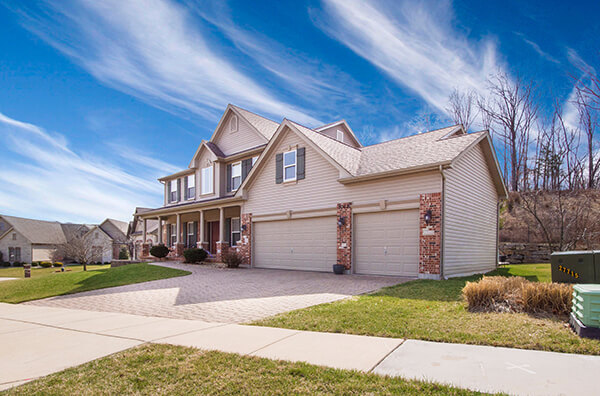
Residential Assisted Living: The residential-assisted living is exactly what it says, residential; it’s a home.
On the other hand, somebody who says, “I’m going to buy an existing business,” they spend $2 million, $3 million on one that they could have created for a lot less than that if they took the time and took the effort to get to that point. They overpaid that knowing what to pay and where to do it. One of the biggest mistakes people make is picking the wrong location. That’s why we harp on that and make sure that people do it right. It’s location. A lot of people come to us and they say, “I’ve got a perfect house.” I look at the house and I say, “You’re right. It’s the perfect house. If you could move it 30 miles to the west or the east or something, you’re going to make money.” If it’s in the wrong location, you and I aren’t going to drive out to visit mom. The placement agents aren’t going to place somebody there in the home because they don’t want to drive 30 miles to get out to that house. The caregivers can’t get there because they don’t have a car and there’s no bus line. Location is critically important. I could go on and on. Some of the most successful students not only do they do exactly what we said, “Here’s where to do it, here’s how to do it, here’s how to get started,” but then they kept it going.
I remember when you were there with Robert Kiyosaki, we were in a room. He was literally yelling at us, “You’re being lazy if you’re not using other people’s money.” He drops the f-bomb all the time. We know that. Somebody asked a great question. He said, “What happens when you reach your goals? What do you do?” His response was brilliant. It was, “Keep on going”. It’s all about momentum. Our most successful students, not only did one doing it exactly the way we said, “Here’s how, here’s where, here’s all that,” but as soon as they got the first one there, right onto the second one, right onto the third one, they end up with five in a few years or nine within a few years. That momentum carrying them to where they want to get, that’s powerful.
Looking at those students, they understood that there was a huge opportunity. They learned from you as far as how to identify the right property. They also understood the business side of it, which was the operational side. We’re willing to do that. Obviously, one property may not be worth that, but doing multiple is where there’s a huge opportunity. Let’s segue into the last couple of pieces, which is, you now being able to offer something where people can participate in this opportunity but not necessarily have to be on an operator. They can be an investor. Let’s talk about that briefly and then we’ll end with something that I’ve done with the other Financial Fridays, which is you talking about the operations of these businesses that would support this type of investment. The experience that you’ve had over the years and where you see the most important pieces of operations.
Family Legacy Homes was created to give people the opportunity to invest in these projects. The reason why you’d want to invest in versus own operate is basically how hands off and how passive you want to be. The closer you are to it, the more work and effort you put in, the higher your return. If you want to be more passive, write a check and receive checks. Your rate of return, in this case, is still significant. If you want to be the operator, if you want to be hands-on, you’re going to get a much higher rate of return. What we do is basically we have students that are creating their homes. They’re buying the homes or building the homes or starting the business. They’re raising capital for it. We manage those people who have the capital and want to invest in those projects so they can participate that way. That’s the two sides of it. This one is getting the business up and running. This one is investing in. It’s a win-win for both of them. That’s what Family Legacy Homes’ goal is.
We're all going to die. Have a conversation with a good friend if you don't know about that, but the point is we're all going to pass away. Click To TweetWe’ve had these discussions before where the opportunity previous to Family Legacy Homes wasn’t purely passive. There was an active element to it, but now you have a passive opportunity. This is where the control of a business is you’re delegating that to somebody else. Talk about how you developed your operational understanding in regards to this industry and how you’ve set up your team to be able to provide a successful opportunity.
I always like to start with the end in mind. If you’re going to be the investor, the first most important thing you’re looking for is a good operator. That’s where the end in mind. How did I get started? I was hands on. There was nobody to teach me how to do it. There was no RAL Academy. I went to a caregiver training, the actual school in Arizona. It’s 104 hours of training, TB test, background check. Not because I’m going to be a caregiver, but because I needed to know what those caregivers were going to know. From there, I hired a manager. The manager then hires the caregivers. They operate that business on a day-to-day basis. Frankly, as an investor, you don’t need to know any of that minutia. There’s so much detail that goes into what I simplified for you. There’s a manager. There are caregivers. Somebody needs to fill the home with those residents. There needs to be marketing to fill those beds. Keep them full and the relationships. Patrick, you and I were talking about how important it is to be able to communicate and relate to people because it’s not just the resident, but it’s the family, the kids, the grandkids and communicating with them effectively so that this operation, this business itself has so many moving parts.
A good operator is what you’re looking for. Somebody who understands the business from the smallest detail all the way through and understands how to delegate and give somebody else the authority to be able to operate. My manager, I might speak to her physically once a week. We may text back and forth three or four times a week. I’m as hands off of an operator as you possibly can be but I’ve got my fingers on everything. I’ve also got the right people in the right positions. They’ve got the empowerment, the ability to make decisions. They’ve got the finances to be able to carry out whatever it is they think needs to be done. It’s a well-oiled machine because of the way I’ve designed it to operate.
I would add to that you taught it. The best way to learn something is to teach it. If you taught it to hundreds and probably over a thousand by now. That’s the thing is you look at business understanding and scaling a business, which this is an example of that. Understanding how the processes at a fundamental level are vital. In this specific business, it’s not operations. It’s operations of a specific opportunity, but there’s so much of the personnel that needs to be in this specific persona having an attitude or perspective of life that is somewhat hard to find. You’ve experienced it, but I look at the impatience that exists in society. This is definitely not a position at one of the central homes that does this type of care if you want patients. That’s a recipe for disaster. Looking at an operator that understands the business, they can hire the right people, get everything coordinated is vital to the success because it’s very people intensive.

Residential Assisted Living: “You’re being lazy if you’re not using other people’s money.” – Robert Kiyosaki
I want to make sure the audience understands. Patrick is not suggesting, neither am I that you’d be a caregiver or the hands-on manager. What he’s saying is to oversee that operation, you need some insights, some encouragement and so on. It’s any business. Storage units might be the only one where it’s like, “Yes, you would have empty rooms and make sure the locks work. I can collect money and the heat works.” There are humans involved here. Don’t be afraid of the idea of hiring people either. There are a lot of amazing people out there who are looking for the right spot. One of the things, Patrick, that I always find interesting in this industry, the caregivers, the managers, they don’t want to be baristas. They don’t want to be a waitress. They don’t want to be something else. They want to take care of these seniors. We started this whole conversation with this doing good and helping others. It’s doing good and giving them the opportunity to help those seniors, the seniors get the help, and the families get the peace of mind. In the meantime, the money that is made is very significant.
It’s one of those successful investment comes from a successful business. The elements of your business of this industry, you’ve had it by hands-on experience, by teaching it. You know it’s successful and what isn’t. You know what a successful caregiver is, you know what isn’t. If people are making an investment, a return of that investment comes from people paying their rent and their family paying their rent, probably part of it. In order for it to be long-term successful, they have to keep paying rent and to keep being happy with the services that they’re getting. It’s one of those like it’s a business where it’s a massive opportunity, untapped opportunity. At the same time, it’s one of those things where you have to have the operations down. You have to have a business down and understand what success is and understand how to get it at a scalable level.
I wanted to touch on that because you said scalable. I want people to understand that one of these homes, the single-family home can generate enough income for most people to live very comfortably. We go through all the scenarios. Paying $10,000 a month after all expenses and income from one of these homes or residential assisted living home, most families can get by on that comfortably. You and I may be not, but most people can. If you had two or three of those in the same area, we get some of the economies to scale the management team itself, the caregivers and so on. Imagine two or three times that amount of money, it makes your life easier. It’s like having one child is hard, having three is almost easier. It truly is.
The concept of that, but now bigger picture scaling. There are students that I have that their goal is to do thousands of beds, hundreds of homes. Once you get to a certain level, then the big money. The big money that is not necessarily smart money. They’ve got a lot of money that wants to get into this niche, into this market right here. They’re willing to write really large checks. That’s what we’re gearing up for. Some of the students were coming through the training, building a big enough portfolio that the big guys are going to come in and pay multiples. That’ll be astronomic compared to what I would want to pay or willing to pay. They are. They do. That’s the end game. That’s two to five years out. This opportunity is coming to shore now. The Baby Boomers aren’t turning 82 for another ten years. You’re in the right place at the right time and this is the place to get in, absolutely.
Always start with the end in mind. Click To TweetGene, I’m super excited for your success. We met shortly after you started. To see some of those that have gone through your academy and the success that they’ve had, it’s inspiring. It’s awesome that you’re taking it to a new level. Congratulations to you. Let’s give out ways in which our readers can learn more about you, follow you and learn more about the opportunity one more time.
RALAcademy.com and The Family Legacy Homes is the investment part. RAL101.com for free introductory training.
Gene, thank you so much. I can’t wait to hear about more of your success.
You too, Patrick. Thank you, everybody.
Important Links:
- Gene Guarino – previous episode
- Residential Assisted Living Academy
- FamilyLegacyHomes.com
- RAL101.com
- www.RALAcademy.com
- https://www.Amazon.com/Insiders-Guide-Investing-Senior-Housing/dp/1727270320/ref=sr_1_1?ie=UTF8&qid=1547571434&sr=8-1&keywords=gene+guarino
- https://www.LinkedIn.com/in/GeneGuarino
- https://www.Facebook.com/ResidentialAssistedLivingAcademy/
- https://www.YouTube.com/user/Yoitsmetv
- https://www.Instagram.com/ralacademy/
- https://Twitter.com/RALAcademy
- https://Plus.Google.com/+ResidentialAssistedLivingAcademy
About Gene Guarino
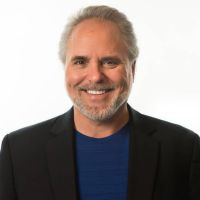
Gene Guarino is a Certified Financial Planner in the US and in Australia. He is the President of the Residential Assisted Living Academy. He owns and operates Residential Assisted Living Homes in Phoenix and Scottsdale Arizona. Gene has been a real estate investor for over 30 years. He has owned and operated 16 businesses and has been an angel investor in numerous others. Gene has written 4 books and hosted 2 radio shows and has spoken to over 250,000 people in 4 countries over the past 20+ years on business and investing. Today Gene is focused on just one thing, Residential Assisted Living. With over 77,000,000 Baby Boomers coming of age, the need is greater than ever and getting bigger every day. Gene’s goal is to help those people and to train others to help them as well. To “Do Good and to Do Well.”

